Updated: 22-Jul-2021
See Fairchild.
The Ranger Aircraft Engines Division belonged to the Fairchild Airplane Manufacturing Corporation group.
-While like Fairchild engines such as the J-44 turbojets were manufactured, the main body of production was entrusted to Ranger.
-Ranger was essentially dedicated to developing two types of engines: those with six inverted in-line cylinders and those with twelve inverted-V cylinders, geared and ungeared, with and without supercharger.
-All Rangers are characterized by having the intake manifolds in "T" and branching in cascade, until reaching all the cylinders.
-The first engine was designed one year after the company was founded in 1926, built in 1927 and marketed in 1928. It was known as the 6-370.
-Later Ranger started with the small and common 6-390D that gave 150 HP.
-The 6-390 was followed by the 6-440. The military designation for these engines was L-390, L-440, etc.
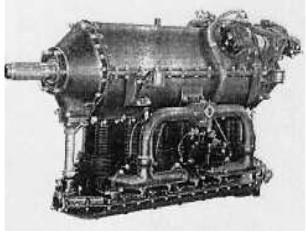
“Ranger 6-390”

“Ranger 6-440C”
-The evolution of these engines can be as follows: the 6-440C2 giving 175 HP at 2,450 rpm. The C3 with 180 HP, the C4 with 190 HP and the C5 with 200 HP.
-There have been an L-550 and a 6-410 for which no specific information is available.
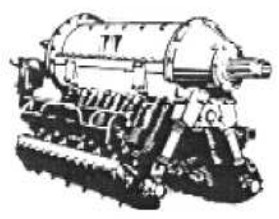
“Ranger V-770”
-The twelve-cylinder inverted-V Rangers are also air-cooled. Starting with 305 HP at 2,400 rpm.
-When they are mechanically supercharged and with reduction gear, they are identified as SGV-770.
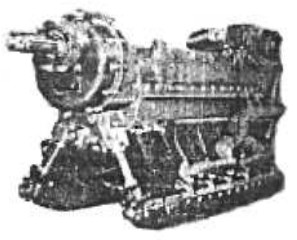
“SGV-770-B5”
-When equipped with the SG attachments, power rises to 450 HP and revolutions to 2,900 rpm.
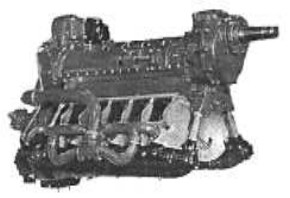
“Ranger SGV-770-C1”
-The SGV-770-C1 has a reduction ratio of 3 to 2.
-The SGV-770D-4 model has a superimposed gearbox differing from the D-5 mentioned in the main text which is epicyclic concentric.
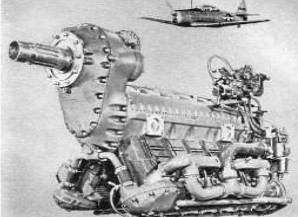
“Ranger SGV-770D-4, from an ad”
-It was ideal for military trainers of the time. It could deliver 575 HP and the service ceiling reached 27,000 feet (9,000 meters approx.).
-It was a 12-cylinder, inverted-V engine. The Ranger Aircraft Engines family was a Division of Fairchild Engines.

“Ranger logo”
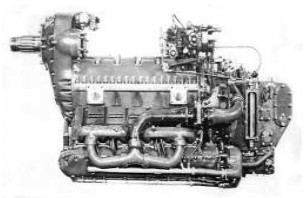
“SGV-770D-4 side view”
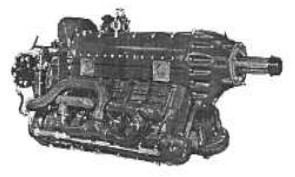
“SGV-770-D5”
- Curiously, these engines usually have the same crankshaft as the 6-440C, as well as the same pistons and cylinders.
-The SGV-770-D5, had a power development capacity of up to 700 HP. These engines were made after the war and were for commercial use. There was another series of engines, the V-880 that gave 450 HP.
-Around 1947 a Ranger turbojet was made with the reference XJ-63-R-1. There was only confidential and restricted data, at least that is how it is said in the obtained information.
-At the USNA, or United States National Archive, in section 452.8 there is an information entry for the XV-920 engine, the XH-1850 and the 390. All of them in 1943.
From Appendix 6: During WWII, Ranger engines were a Fairchild product. Interesting pictures were used in their advertisements.
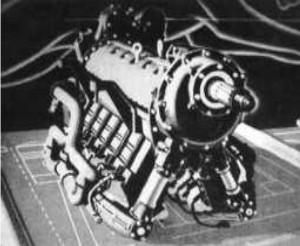
"Nice drawings on blue prints"

"This drawing has cutaway parts"
-The interesting thing about this drawing is its reduction gear, with cylindrical gears but with double-angled and opposed teeth, the so-called Citroën gears because they are patented by André Citroën himself, also called herringbone gear.
-Both engines are placed on plans, or rather, copies of plans in blue ink. The so-called "Blue Print".
-We have now discovered an APP (Auxiliary Power Plant) or On-Board Group for supplying electrical energy when the main engines are not running or as a booster or starter.
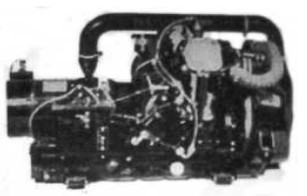
"Ranger APP Group"
-According to the information, it delivered 28.5 Volts DC and a current of 170 Amp.
-Actually the engine was two-stroke and gave 9 HP.
From Appendix 9: The VX-920 and XH.-1850 prototypes mentioned in the main text now have a supplementary explanation.
-The XV-920 was basically the V-770 but it had pistons with increased bore.
-The same cylinders and pistons from the XV-920 were used in the XH-1850. Although it seems to refer to an H-engine, it turns out to be more an X-engine. See photo.
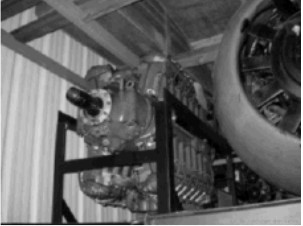
“The XH-1850 at the NASM” (PiP=AEHS)
-An XH-1850 is stored in the reserve of the National Air and Space Museum in Washington. It can be seen that the cylinder blocks are somewhat inclined (30°) giving an engine in X instead of the XH (experimental in H).
-Ranger was a Fairchild Division, (see also).
From Appendix 10: A two-cylinder boxer piston engine of this brand was used as an on-board auxiliary power group, APP. And like most of these internal and auxiliary engines they were known as "Putt-Putt".
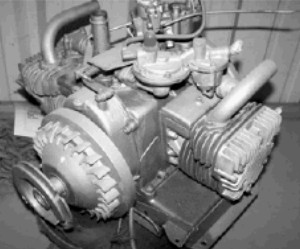
“Ranger Putt Putt”
Engines of RANGER
Model: 6-370
Arquitecture:
Cooling:
Total Displacement:
Bore / Stroke: x
Power:
Weight:
Model: 6-375
Arquitecture:
Cooling:
Total Displacement:
Bore / Stroke: x
Power:
Weight:
Model: 6-390 (L-390)
Arquitecture:
Cooling:
Total Displacement:
Bore / Stroke: x
Power:
Weight:
Model: 6-410
Arquitecture:
Cooling:
Total Displacement:
Bore / Stroke:
Power:
Weight:
Model: 6-440 (L-440)
Arquitecture:
Cooling:
Total Displacement:
Bore / Stroke: x
Power:
Weight:
Model: APP “Putt-Putt”
Arquitecture:
Cooling:
Total Displacement:
Bore / Stroke: x
Power:
Weight:
Model: L-550
Arquitecture:
Cooling:
Total Displacement:
Bore / Stroke: x
Power:
Weight:
Model: V-770, SGV-
Arquitecture:
Cooling:
Total Displacement:
Bore / Stroke: x
Power:
Weight:
Model: V-880
Arquitecture:
Cooling:
Total Displacement:
Bore / Stroke: x
Power:
Weight:
Model: XH-1850
Arquitecture:
Cooling:
Total Displacement:
Bore / Stroke: x
Power:
Weight:
Model: XJ-63R1
Arquitecture:
Compressor/s:
Combustion chambers:
Turbines:
Power / Thrust:
Weight:
Model: XV-920
Arquitecture:
Cooling:
Total Displacement:
Bore / Stroke: x
Power:
Weight:


